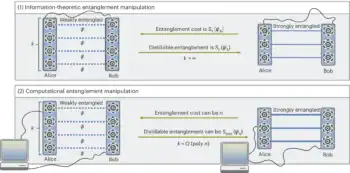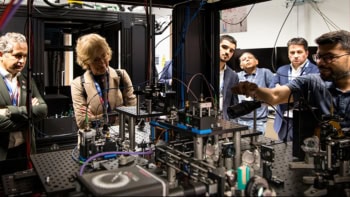
An optical system for solving combinatorial optimization problems has been made available for use online, say its creators in Japan. Called the Quantum Neural Network (QNN), the system has been developed by Nippon Telegraph and Telephone (NTT), Japan’s National Institute of Informatics, and the University of Tokyo.
Combinatorial optimization problems involve evaluating large numbers of possible solutions to a problem and identifying the best one. A familiar example is the “travelling salesman problem” whereby a person wishes to visit several different destinations by the shortest possible route. Such problems can be found in a wide range of human endeavour from scheduling medical procedures in a hospital to maximizing the performance of a complex system like an aircraft.
Round and round
The QNN comprises a 1 km loop of optical fibre that incorporates a phase-sensitive amplifier (PSA) and a field-programmable gate array (FPGA). Information is encoded in 2000 optical parametric oscillators (OPOs), which are light pulses that are each in a superposition of two polarization states (0 and π). These OPOs act as quantum bits (or qubits), which are injected into the loop. The FPGA makes measurements on sequential pairs of OPOs and can then modify the OPOs to solve the desired combinatorial optimization problem. The process is repeated as the OPOs make as many as 1000 trips around the loop, amplified at each pass by the PSA. This process transforms the OPOs into a specific configuration of 0 and π states, which is then read off as the solution to the problem.
Rather than being a universal quantum computer that can address a wide range of problems, QNN is designed to optimize systems that can be described by Ising models. These have constituents that can take one of two values (0 or π) and only interact with their neighbours. While this puts a limit on the usefulness of the QNN, Ising models can be used to describe a wide range of phenomena in physics and beyond.
Access to the system is via QNNcloud, where new users are invited to create an account.



